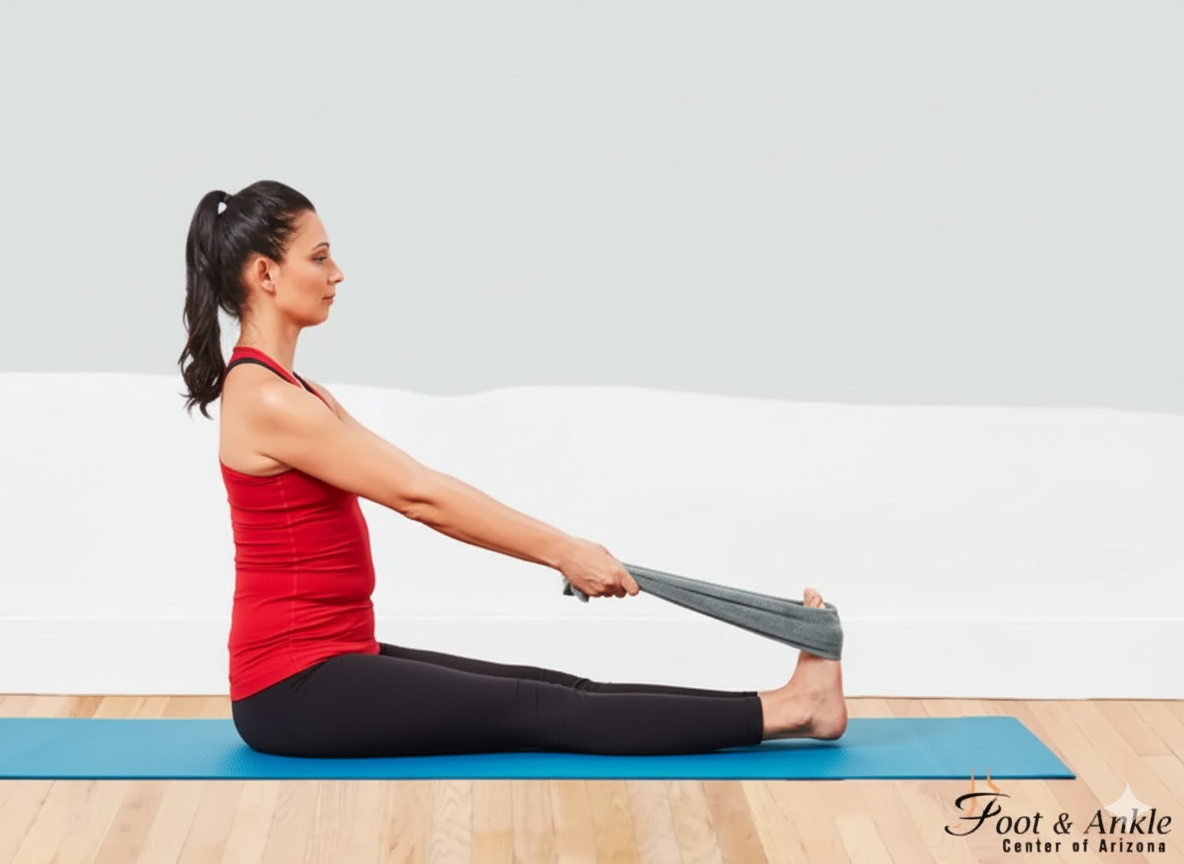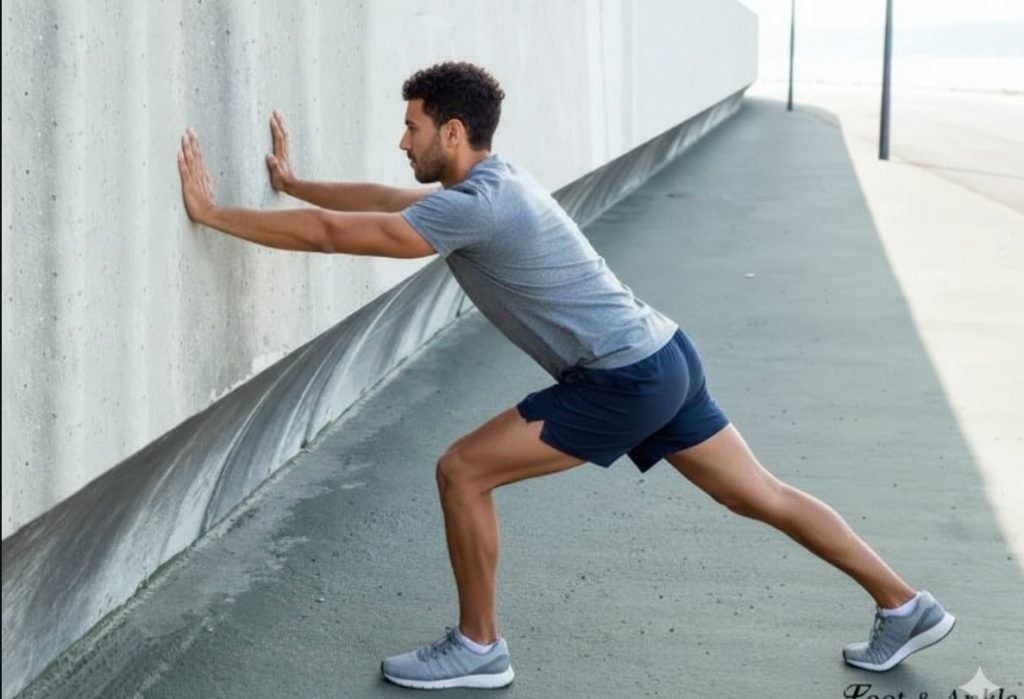The Achilles tendon does play a vital role in daily walking, running, and jumping. It is good to go for proper stretches that maintain flexibility for good performance and prevention from injury. Having Achilles tendon stretches incorporated into one’s routine is very important for any athlete, after after-injury recovery, or even when one just needs to improve mobility. This guide explores how to go about stretching the Achilles heel, advanced techniques to perform this type of stretching, and torn Achilles tendon recovery time.
Achilles Tendon Basics
The Achilles tendon is the thickest and most robust tendon in the body; it connects calf muscles with the heel bone. In every physical activity, it has to endure much tension. However, the Achilles tendon is also very susceptible to injury overuse, tightness, and even tear.
Torn Achilles tendons are debilitating and take great care in recovery. Stretching can help prevent these types of issues by allowing flexibility to improve along with the resilient tendon.
Why Achilles Tendon Stretching Is Important
Stretching the Achilles tendon benefits your overall mobility and helps reduce the risk of injury. Here’s why:
- Improved Range of Motion: Achilles Tendon Stretches to increase flexibility in the calf and the ankle.
- Reduced Injury Risk: Stretching regularly helps prevent micro-tears and overuse injuries.
- Recovery Support: Stretching post-injury helps in the recovery process and decreases one’s recovery time due to a torn Achilles.
Preparation Before Achilles Tendon Stretching Exercises
Proper preparation will ensure that you gain maximum benefit from a stretching program without injury:
- Light exercises like jogging or ankle circles can be performed for warm-ups.
- Use Props: Resistance bands and foam rollers can add depth to your stretches.
- Avoid Overstretching: Never force beyond pain; the sensation of stretching should be mild tension without discomfort.
Best Achilles Tendon Stretches
1. Standing Wall Stretch
How to do it:
- Stand facing a wall, one foot forward and the other back.
- Keep the back leg straight, pressing the heel into the floor, while bending the front knee.
- Hold for 20–30 seconds.
- Benefits: Targets both the Achilles tendon and the gastrocnemius muscle.
2. Heel Drop Stretch on a Staircase
How to do it:
- Stand on the edge of a step with your heels hanging off.
- Slowly lower your heels below the step while holding onto a railing for support.
- Rise back to the starting position.
- Benefits: This dynamic tendon stretch builds in strength and flexibility.
3. Seated Towel Stretch
How to do it:
- Sit with your legs extended.
- Loop a towel or resistance band around your foot.
- Gently pull the towel toward you while keeping your knee straight.
- Benefits: Excellent for beginners or those recovering from an injury.
4. Downward Dog Pose
How to do it:
- Start in a plank position then lift your hips up and back into an inverted “V.”
- Push your heels toward the ground.
- Hold for 30 seconds.
- Benefits: Incorporates the Achilles tendon with overall posterior chain stretching.
Advanced Stretching Techniques for Improved Recovery
If injured, for example, an Achilles tendon tear, make a step-by-step process to reduce torn Achilles recovery time:
1. Eccentric Heel Drops
Heel drop, with control, paying close attention to the loading of the tendon.
Very useful for rebuilding strength in the tendon.
2. Proprioceptive Neuromuscular Facilitation
The partner’s resistive stretching allows tension followed by relaxation, thus creating more productive stretching.
Torn Achilles Tendon Recovery Time
Recovery time for an Achilles tendon tear depends on the severity of the injury and the type of treatment applied:
- Non-Surgical Recovery: 6–12 months, including physical therapy and tendon stretches.
- Surgical Recovery: In about 6 months, the initial healing takes place, whereas complete recovery requires a year.
Achilles tendon stretching should be guided during recovery with the help of a physical therapist to avoid re-injury.
How to Stretch the Achilles Heel Safely
Follow these tips to ensure you stretch effectively and safely:
- Gradual Progression: Increase intensity and duration slowly over time.
- Consistency: Stretch daily for long-term flexibility.
- Posture Matters: Maintain proper form to avoid strain on other muscles.
Common Mistakes to Avoid
- Skipping Warm-Ups: Always warm up before stretching to prevent injuries.
- Ignoring Pain: Stop immediately if you feel sharp pain during a stretch.
- Overstretching: Tendons are less elastic than their muscles; avoid forcing beyond your limit.
FAQs: Achilles Tendon Stretches and Recovery
1. What are the benefits of Achilles tendon stretches?
Achilles tendon stretches to improve flexibility, reduce the risk of injuries, enhance mobility, and support recovery from conditions like tendonitis or a torn Achilles tendon.
2. How often should I perform Achilles tendon stretches?
It is ideal to perform Achilles tendon stretches 2–3 times daily, especially after physical activity or as part of a recovery program for maintaining flexibility and strength.
3. Do Achilles tendon stretches prevent injuries?
Yes, frequent stretches reduce tension on the tendon, increase the range of motion, and reduce the risk of overuse injuries, tears, and stiffness.
4. How do I know that I am overstretching my Achilles tendon?
Overstretching causes a sharp pain, discomfort, or a sense of pulling beyond mild tension. Always pull your legs gently, but never through sharp pain.
5. Can I do Achilles tendon stretches with resistance bands?
Yes, resistance bands are great for assisted stretching, as they increase control and effectiveness when one needs to specifically target the Achilles tendon.
6. How do I safely stretch my Achilles tendon?
Get warm first, maintain form, avoid overstretching, and stick to a routine to keep it safe and effective.
7. When should I see a doctor about Achilles tendon pain?
If you have continuous pain, swelling, or difficulty walking after stretching, consult with a specialist to rule out extreme cases such as tendonitis or a tear.
8. Does yoga stretch the Achilles tendon?
Yes, it does. The Downward Dog and the first Warrior are excellent in stretching the Achilles tendon while actively recruiting the surrounding muscles.
9. For whom are Achilles tendon stretches indicated?
Most people can benefit from these stretches, but people with injuries or certain medical conditions should consult a health professional before adopting them.
Conclusion: Long-Term Health of the Achilles Tendon
Make sure you include Achilles tendon stretches into your daily routine for flexibility, performance, and recovery. These methods will change your mobility from injury prevention to minimizing torn Achilles tendon recovery time. You can have safe, effective, and fitness-level stretches to start with today.






